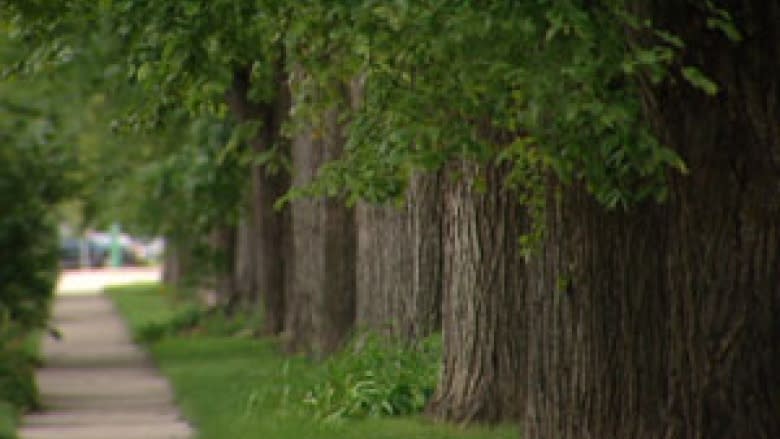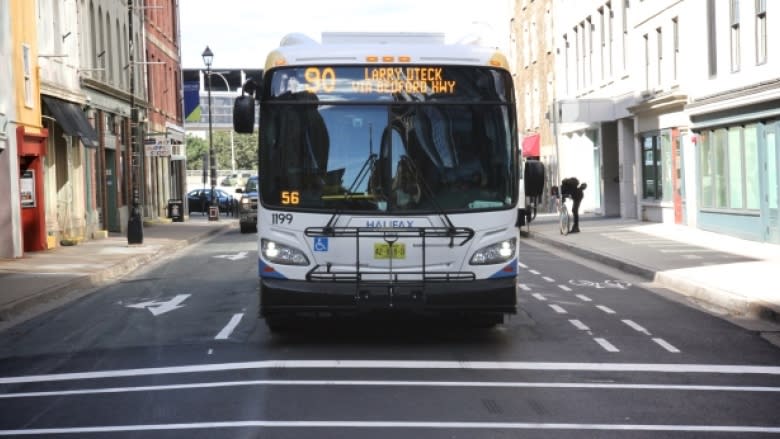Bus lanes could spell bad news for Halifax's 'tree lawns,' researchers say
Halifax's transportation strategy could see the strips of grass that run beside some Halifax roads paved over to make way for buses — but the city shouldn't be quick to sacrifice those "tree lawns," say two Dalhousie University researchers.
The municipality's proposed integrated mobility plan could include a bike network, better sidewalks and wider streets with bus-only lanes.
But James Steenberg, a postdoctoral fellow studying urban forest ecosystems in Halifax, told CBC's Information Morning there are tradeoffs to consider.
He said the city has relatively few patches of public land on which to plant trees. With an aging tree population, the tree lawns, or strips of grass between sidewalks and roads, are an important site for regenerating the urban forest.
"If we don't increase tree planting in those public rights of way especially, we may get … all [the trees] reaching the end of their lifespan at the same time and be faced with a sharp decline in canopy all at once."
Multiple benefits
Peter Duinker, a professor at Dalhousie's school of resource and environmental studies, has been instrumental in Halifax's urban forest strategy.
He said the trees that comprise the city's canopy — the portion of a city's surface area that is shaded by leaves — perform an important function, especially when those trees are not in people's backyards.
"The trees that are most useful to people of the city are the trees in the streets, they provide us with the greatest range of benefits."
Duinker said those benefits include providing shade to pedestrians and houses, reducing wind strength and capturing carbon. They also provide a barrier between pedestrians and the road, making sidewalks safer.
"I hate to say that's a benefit of trees, that they will stop a car from hitting a pedestrian, but there you go."
Sacrificing trees first
Last week the person in charge of developing Halifax's transportation plan, Rod MacPhail, said one possibilty is the widening of Bayers Road for buses, eliminating a thin grassy verge. He also suggested Robie Street could be looked at.
But Duinker said the Bayers Road verge, which could provide an opportunity for trees to grow, should instead be considered an important part of the streetscape.
"[Our] intent with wanting to talk about [tree lawns] is to integrate them into the complete streets design philosophy, that street trees need to be there right along with pedestrians … and public transit friendly streets."
Duinker said eliminating the spaces in which trees can grow on Bayers Road could set a precedent for other streets, and isn't the best tradeoff to make in the name of better transit.
"To sacrifice the trees first on account of more asphalt is not the kind of city I want to live in."



